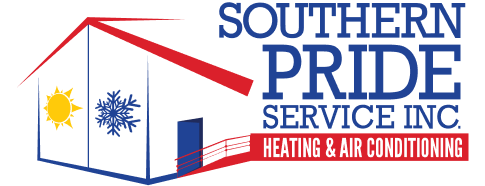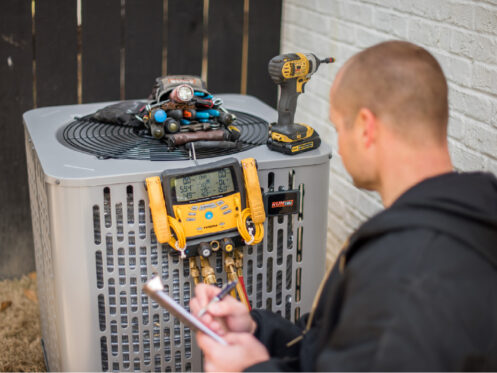Your air conditioner works hard all summer, and winter winds can leave outdoor coils exposed to frost, debris, and moisture buildup that can shorten your system’s lifespan. Like any hardworking appliance, your air conditioning system deserves a bit of care before temperatures drop.
Clearing Debris and Giving Coils a Fresh Start
When the leaves fall and twigs accumulate around your condenser, you risk trapping moisture against the fins and coils. That damp environment can freeze overnight, potentially damaging delicate parts. Begin by switching off the power at the disconnect box and gently removing any stuck leaves or grass clippings with a soft brush or your hand. Then rinse the coil surfaces with a gentle stream of water from a garden hose, taking care not to bend the fins.
Aim the spray at a downward angle so that water washes debris out rather than pushing it deeper into the coil pack. As you work, you’ll notice grime that the water loosens, which you can wipe away with a cloth. Taking time to clear away this organic matter means frost won’t stick as easily when temperatures dip, and your system will breathe freely when spring returns. A clear coil also transfers heat more efficiently during cool-weather defrost cycles, so you avoid extra strain on fans and compressors later in the season.
Securing and Insulating Refrigerant Lines
The copper lines that carry refrigerant to and from your outdoor unit can chill quickly in winter air, so wrapping them matters. First, inspect the foam insulation that covers both the suction line and the smaller liquid line. If you find brittle or missing sections, swap in fresh closed-cell foam sleeves sized for those pipes. Slide each piece snugly over the tubes and seal seams with vinyl-backed tape rated for plumbing.
That barrier slows heat loss and keeps refrigerant flowing smoothly when your system switches on again. In tighter spots where foam sleeves won’t fit, professionals often apply a thin layer of heat-resistant tape directly to the metal to reduce chill transfer. Covering the refrigerant lines protects compressors from working overtime to compensate for cold refrigerant and cuts energy use during brief winter heat calls. It also guards against cracks that can leak refrigerant when metal contracts in freezing weather. Well-insulated lines help your entire cooling system survive idle months without surprise breakdowns.
Covering the Condenser Head-to-Toe: The Right Way
A breathable cover over your condenser unit blocks windblown debris and moisture, but must fit properly to avoid trapping condensation inside. Choose a cover designed to fit the top of your unit without sealing the sides shut. Drape it evenly without sagging into fan openings. That positioning lets any moisture escape while keeping leaves and critters from nesting inside.
Avoid plastic tarps or makeshift coverings that lie flat across the fan grill, which can collect water and push it into electrical parts. A good cover has air vents or mesh panels along the sides. Once it’s on, give the cover a gentle tug to ensure it won’t fly off in a gust. Come spring, simply remove the cover, hose down the coil again, and restore power. Using a proper cover each winter keeps rust and mildew from developing, so your condenser arrives at warm-weather startup in the same condition you left it.
Checking and Draining the Condensate Pan
Your air conditioner’s condensate pan catches moisture as your system runs, and leftover water left standing in the fall can freeze and crack the pan. Lift the access panel and peer into the pan to see if any water or algae is lingering. If you spot moisture, use a wet-dry vacuum to suck it out completely. Next, pour a bit of vinegar down the drain to loosen any slimy residue, and flush with clear water. That rinse clears sludge that can clog the drain line and back up into the pan. After draining, inspect the pan for rust spots or small breaches.
A hairline crack may be patched with waterproof sealant, but large damage calls for replacement before winter. A dry, clean pan resists freeze damage and prevents water from leaking onto surrounding insulation or framing. Tending to that component before cold weather settles in keeps your system trouble-free and protects your air handler from corrosion next season.
Protecting Electrical Components From Cold and Critters
The wiring and contactors inside your outdoor disconnect box sit exposed to wind and rain, so winter preparation is about more than tightening screws. Open the box to check for any loose connections or frayed insulation. If you find exposed copper, tape it with electrical-grade vinyl.
Clean away dust inside the box with a dry cloth and check that the rubber gaskets around the cover still seal tightly. That seal keeps out small rodents looking for shelter on frosty nights. You might spot droppings or shredded paper that signal a nest. If you see those signs, call in an electrician to re-secure the box and install mesh guards over any unused conduit entries. Preventing water or critter intrusion into your electrical panel avoids shorts or tripped breakers when you flip the system back on next spring.
Protecting the Air Handler and Indoor Equipment
While tending to the outdoor unit, don’t overlook your indoor air handler or heat pump. Open the access panel to clear dust from blower blades and inspect filters. Replace any that look worn or clogged. Check the condensate drain under the unit and repeat the vinegar rinse you did at the condenser pan. Confirm the float switch operates freely by gently lifting it; it should cut power if water backs up.
Examine duct boots and insulation around the air handler for gaps where cold air might enter. Adding a few inches of pipe-wrap insulation around the supply trunk just ahead of the unit keeps warmed air from chilling as it moves into the ducts. Taking these indoor steps stops frost buildup on internal coils and keeps your system ready for that first cool snap.
Final Look at Your Outdoor Space
Give your outdoor area one last scan before cold weather arrives. Trim nearby shrubs and branches that might brush against the unit and deposit moisture-holding debris. If you have a fence or screen around your condenser, check that it still allows at least 2 feet of clearance on all sides. That gap prevents restricted airflow that can freeze on coil fins.
Brush away loose mulch or gravel that might kick up into the unit on windy days. Finally, mark the shutdown date on your calendar and tie it into your spring startup reminder. That simple notation helps you maintain this routine year after year. Taking a few minutes to tidy the surroundings now means you’ll avoid costly coil damage and keep your cooling system humming through winter and beyond.
Stay Protected Through Every Season
Taking a few hours now to cover, clean, and secure your outdoor cooling gear pays off when winter’s chill settles in. In addition to AC maintenance, we offer heat pump tune-ups and duct sealing to keep your whole HVAC setup tight against the elements. Ready to lock in your system’s winter defenses? Call Southern Pride Service today to book your pre-winter HVAC checkup.







